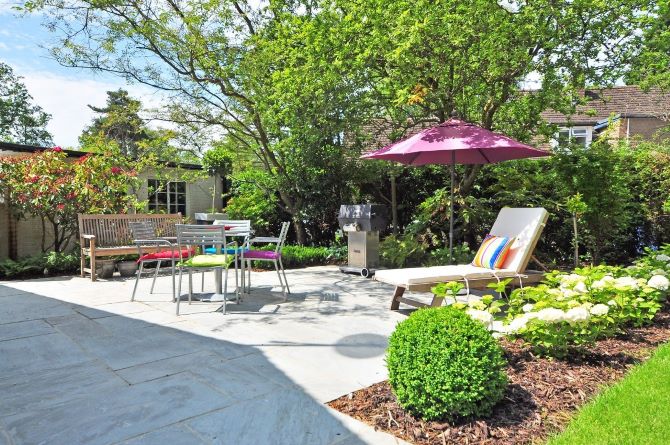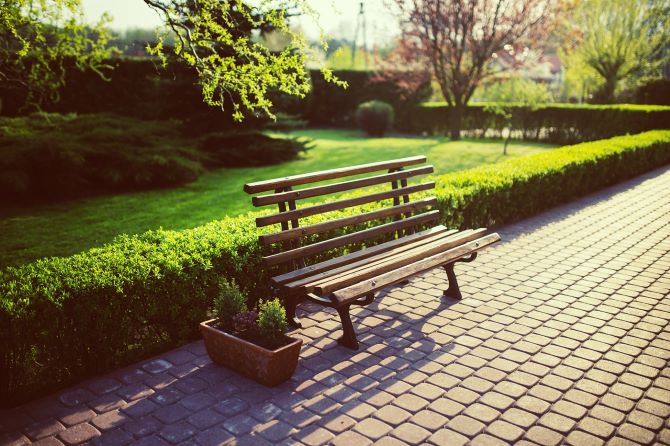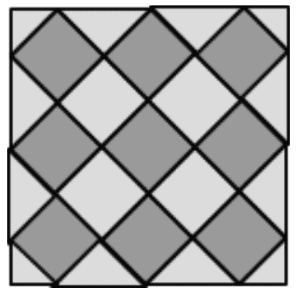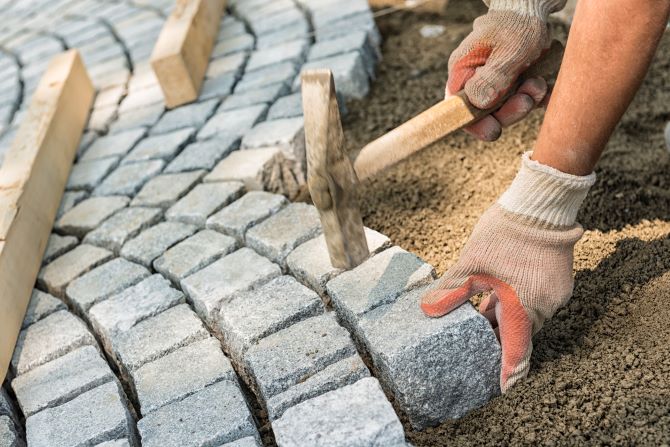Paving
A sleek paved patio or sturdy driveway is important. It is safe and also looks nice. On this page, you will find more information about paving prices, types of paving, laying patterns and handy tips on how to save on paving costs.
How much does paving cost?
Do you want to pave your garden? It doesn’t have to be expensive at all. The price depends on the type of paving, the number of square metres and the paver’s rate. On average, one square metre of paving costs between £30 and £100.
| Paving section | Average paving costs |
|---|---|
| Paving stones/garden tiles | £15 – £ 40 per m2 |
Find the best professional for your project and get free quotes.
Start

Paving garden
The work of a paver consists of 4 phases. Preparation, placing sand, paving and washing in.
Phase 1. Preparation
The paver starts by clearing the area where the paving will be laid. All plants, flowers and old stones in the way are removed. Then the paver digs out the area to be paved 15 to 25 centimetres.
Phase 2. Placing sand
For the strength of the paving, the paver pours 10 centimetres of crushed rubble or granular mix. Root fabric is placed over this layer to prevent weeds from growing between the joints. The pit is then filled with sand. The paver vibrates the sand with a vibrating plate. At the same time, the specialist takes drainage into account. Per metre, the terrace slopes down 1 centimetre. In this phase, the paver also takes any lighting into account. Cables are laid so that there are no cables in sight.
Phase 3. Paving
If the subgrade is good, the paver will place the curb stones. The borders will be slightly lower than the stones. This way, rainwater can easily drain away. Now it is time to place the paving in its laying pattern. Have you chosen natural stone tiles? Then the paver rakes some cement through the sand. This provides more strength.
The paving is laid from the highest point in the layout of your choice. During paving, the tiles and stones are struck with a rubber mallet. The whole tiles or stones will find their place first. Then the paver fills the open spaces by cutting tiles and sawing stones.
Phase 4. Washing in
After the paver has laid the paving. it is time to wash in the stones or tiles. The vibrating plate vibrates the stones once more. Then, the professional reinforces the paving by sweeping a layer of sand between the tiles and stones. Even after the paver has left, filling the joints for a week is still important. This way, you will enjoy solid and balanced paving for years.
Types of paving
The cost of paving your garden depends greatly on the type of paving you choose. For example, gravel and grit are cheaper to lay than ceramic or natural stone tiles. Below we zoom in on the types of tiles and the costs you can expect per type.
Gravel
Are you looking for a cheap alternative to paving? Then go for gravel. This costs, on average, £10 per m2. It got its shape from nature. Through the erosion of large rocks, round gravel stones are created. These are low-maintenance and good for the environment. Rainwater easily sinks into the ground via the stones.
Renoca tip: Lay gravel sheets under the gravel or stone chips. This will keep the small stones well in place.
Split
Split is an inexpensive form of paving. On average, you pay £12 per m2 for it. Unlike gravel, split contains sharp edges. These are created by machines breaking large stones. Split provides a firmer surface than gravel. This is because round gravel stones keep moving, and the sharp split stones lie more firmly on each other.
Sier paving
Do you want to give your garden a nice look? Then ornamental paving is a good solution. Below, we look at different types of ornamental paving and their costs.
Pave blocks
Pave blocks cost, on average, £40 per m2. The concrete blocks consist of 20 x 20 cm squares of bricks. Take into account the cutting loss. Therefore, order 8 per cent more bricks to ensure you have enough. Would you like to lay the bricks in a diagonal pattern? If so, allow for a 12 per cent cutting loss.
Trumble brick
Trumble bricks cost, on average, £20 per m2. The concrete bricks are tumbled, eliminating sharp edges and corners. This creates a nostalgic and natural look. Please allow for cutting loss. Therefore, order 8 per cent extra drumming bricks. With a diagonal connection, you will lose up to 12 per cent.
Clinkers
Clinkers cost, on average, £30 to £60 per m2. Are you going to lay a terrace with clinkers? The rectangular concrete stones give your terrace an authentic look. As the tiles are 6 cm thick, they are also suitable for paving your driveway. Avoid having too few clinkers after cutting the stones. Therefore, order 8 per cent extra.

Garden tiles
If you are going to buy garden tiles, you can always find a type of tile that suits your style The tiles are available from 15 to 120 cm wide. Large garden tiles optically enlarge the space and give your garden a modern look. Smaller tiles create an authentic atmosphere.
Ceramic tile
Ceramic tiles cost an average of £45 per m2. These garden tiles resist all weather conditions and liquids such as grease, red wine and detergents. Having these tiles laid in your garden will create a modern look.
Natural stone tiles
Natural stone tiles cost, on average, £40 to £70 per m2. No natural stone tile is the same. The small imperfections bring a natural feel to your garden. Remember that you should only clean natural stone tiles with acid-free detergent.
Beton tile
Beton tiles cost, on average, £15 per m2. They can be ordered in many sizes. From small 30 x 15 cm tiles to 100 x 100 cm tiles. Concrete tiles have a porous surface that absorbs much dirt, water and dust. Make sure you clean the concrete tiles regularly to enjoy your paving for a long time.
Rubber tile
Do you want to create a safe garden for your children? Then buy rubber tiles. These cost an average of £40 per m2. The tiles contain a non-slip coating that allows children to land softly on them. The tiles are permeable so that rainwater drains easily.
Mountain gravel tile
These tiles cost an average of £25 per m2. The concrete tiles have a top layer of gravel. They are suitable as a substrate for both a terrace and your driveway.
Elay
Elays are very decisive for the appearance of your paving. You can create a modern look using simple laying patterns such as half-tile and checkerboards. A herringbone bond gives your garden an authentic atmosphere. Ask the specialist which laying pattern best suits your needs. View the possible laying patterns of garden paving for your garden here.
| Laying pattern | Description | Example |
|---|---|---|
| Semi-brick bond | One of the most popular laying patterns is the half-brick bond. This bond resembles the way bricks are bricked. The strips lie in one straight line, giving the terrace a lively look. |  |
| Dambord pattern | A checkerboard pattern is one of the simplest patterns to lay for a paver. The stones are laid straight next to and on top of each other. A checkerboard pattern is created by using 2 different colours. |  |
| Wildborder | To get a wild border pattern, a paver needs several sizes of ornamental paving. This is a specialised job where the paver can show his skills. A wild bond creates a unique look because of the artificial patterns. |  |
| Block bond | The block bond is often used in gardens due to the use of clinkers. Laying two elongated tiles side by side creates a square. |  |
| Visguette bond | Visguette bond is very popular in old streets. You see this bond more and more, both indoors and outdoors. Long narrow clinkers in your garden create an authentic look. |  |
| Diagonal bond | The bricks in a diagonal bond are turned 45 degrees. The paver has to do more chopping in this bond. The paver cuts the tiles at the corners and edges of the terrace. This leaves more waste. Order 12% more stone/tile surface to avoid having too few tiles. |  |
Occess band
Occess band costs on average £5 to £10 per metre. This prevents your terrace or driveway from subsiding over time. If the paving subsides, cracks and gaps can appear between the stones. The curb should be placed at the side of the paving. The specialist creates a 1 cm height difference between the tile and the curb. The terrace is thus slightly higher. In this way, rainwater will not stay on the terrace.
A curb for a terrace is often 5 cm wide and 15 cm high. A curb for a driveway should be at least 6 cm wide and 20 cm high. This is necessary because a driveway has to endure more.
Palisades
Palisades cost, on average, £10 per metre. Do you want to bridge a height difference in your garden? Then use palisades. Palisades are high curb stones that form a small low wall. Remember that ⅓ of the palisade disappears into the ground to remain solid. Palisades are available from 25 cm high up to as high as 75 cm.
Paving specialist
Paving a new terrace, driveway, or whole garden is difficult and tough. Specialists will be happy to help you lay your stones or tiles. A specialist will consider drainage and neatly conceal the electrics for outdoor lighting.
Are you sure you are dealing with an experienced paving contractor? Ask the professional about the Erkend Craftsmanship – Paver’s seal of approval. Pavers who hold this quality mark are proven professionals. They have been tested by an independent auditor.
Do you find calculating the number of stones, sand and curbs difficult? Ask the specialist for advice to ensure you do not have too many or too few stones/tiles. You create a modern look by using a simple laying pattern, such as a half-brick bond and checkerboard pattern. A herringbone bond gives your garden an authentic atmosphere. Ask the specialist which laying pattern best suits your needs. Check out the possible paving patterns for your garden here.

Paving tips
Prevent paving – Don’t pave your entire garden. Place borders in the garden or use gravel or grit. This will leave some areas unpaved. Rainwater will have a chance to soak into the ground easily during heavy rainfall.
- Big tiles – Do you have a small garden? Then make use of large tiles. Large tiles give a calm and spacious look. Tiles in diagonal bonding make the space look even bigger.
- Care for balance – Do you have an organic garden? Make use of modern rectangular tiles. This way, you keep balance in your garden.
- Street paving contractors – Get several paving quotes from street paving contractors. In addition to the price, compare the cost of removing the old paving, the quality marks and reviews. In addition, check whether the pavers charge call-out fees.
Find the best specialist for your project and get free quotes.
Start